 Image 1 of 10
Image 1 of 10

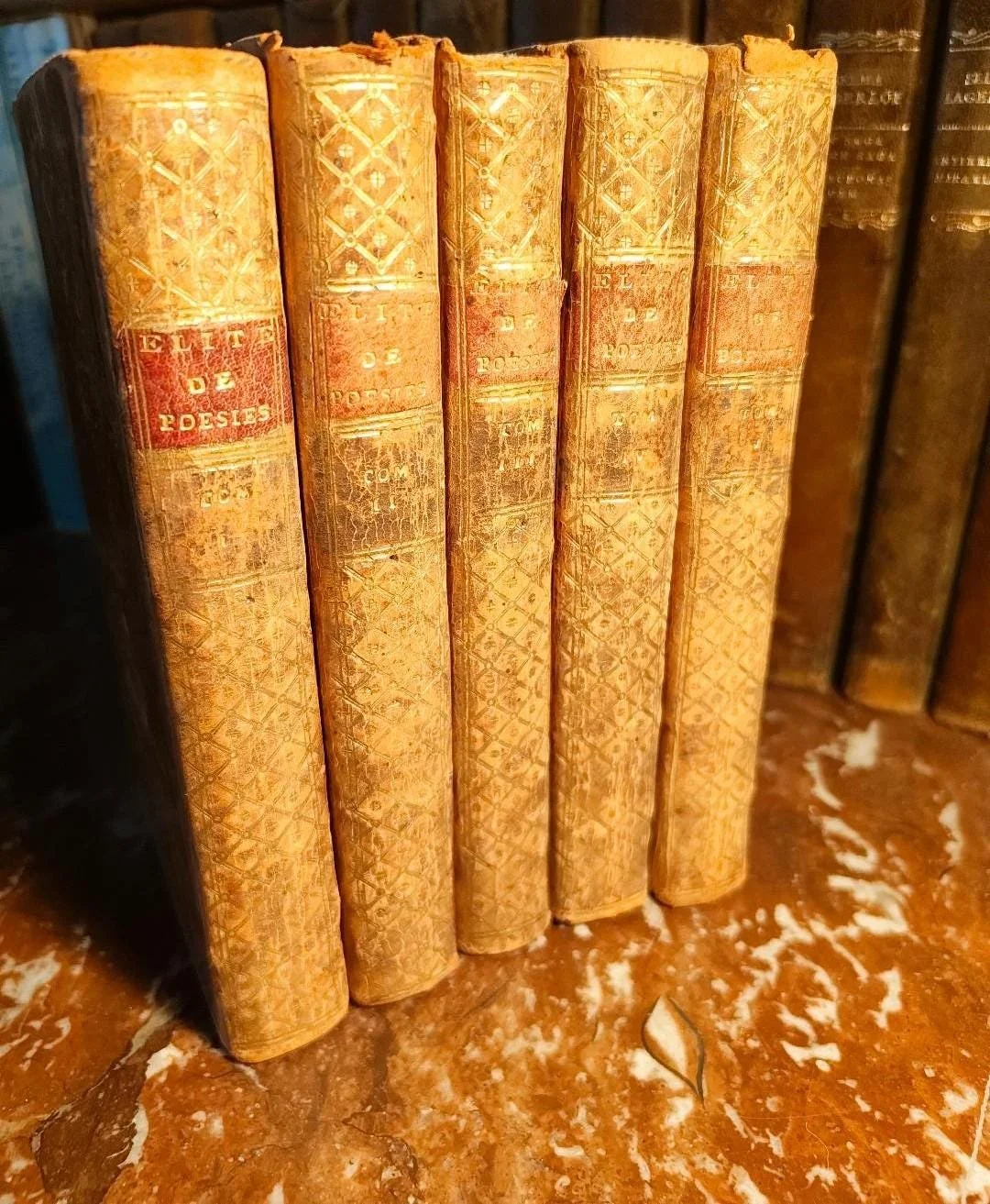 Image 2 of 10
Image 2 of 10

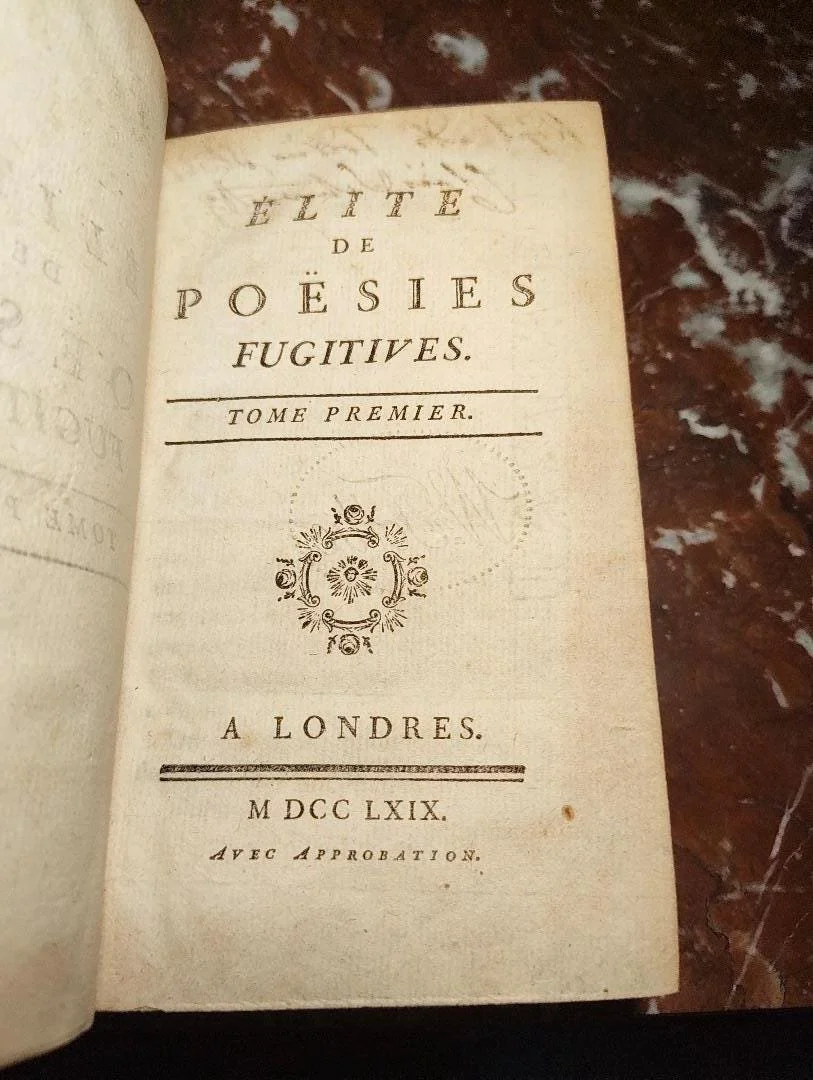 Image 3 of 10
Image 3 of 10

 Image 4 of 10
Image 4 of 10

 Image 5 of 10
Image 5 of 10

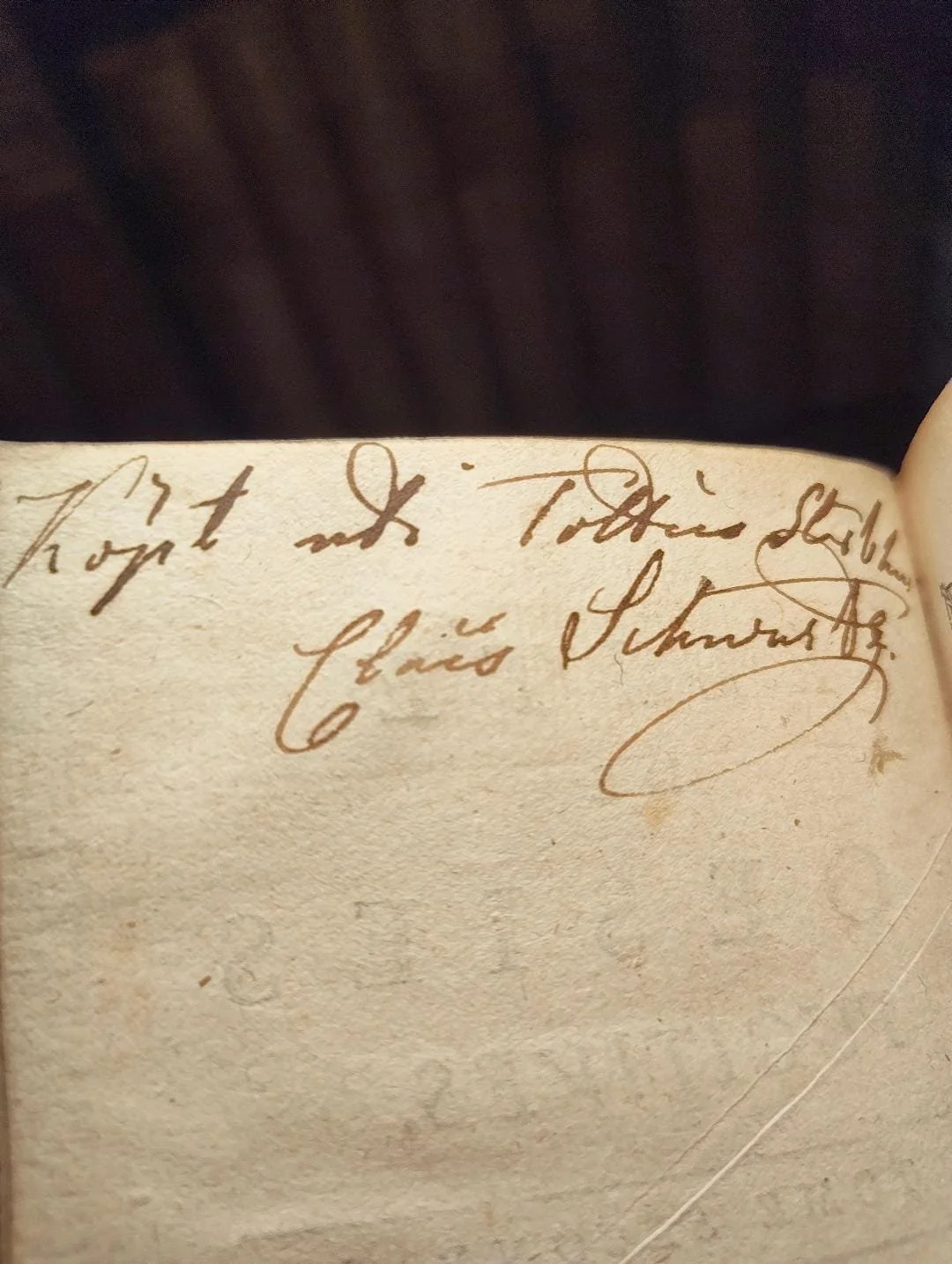 Image 6 of 10
Image 6 of 10

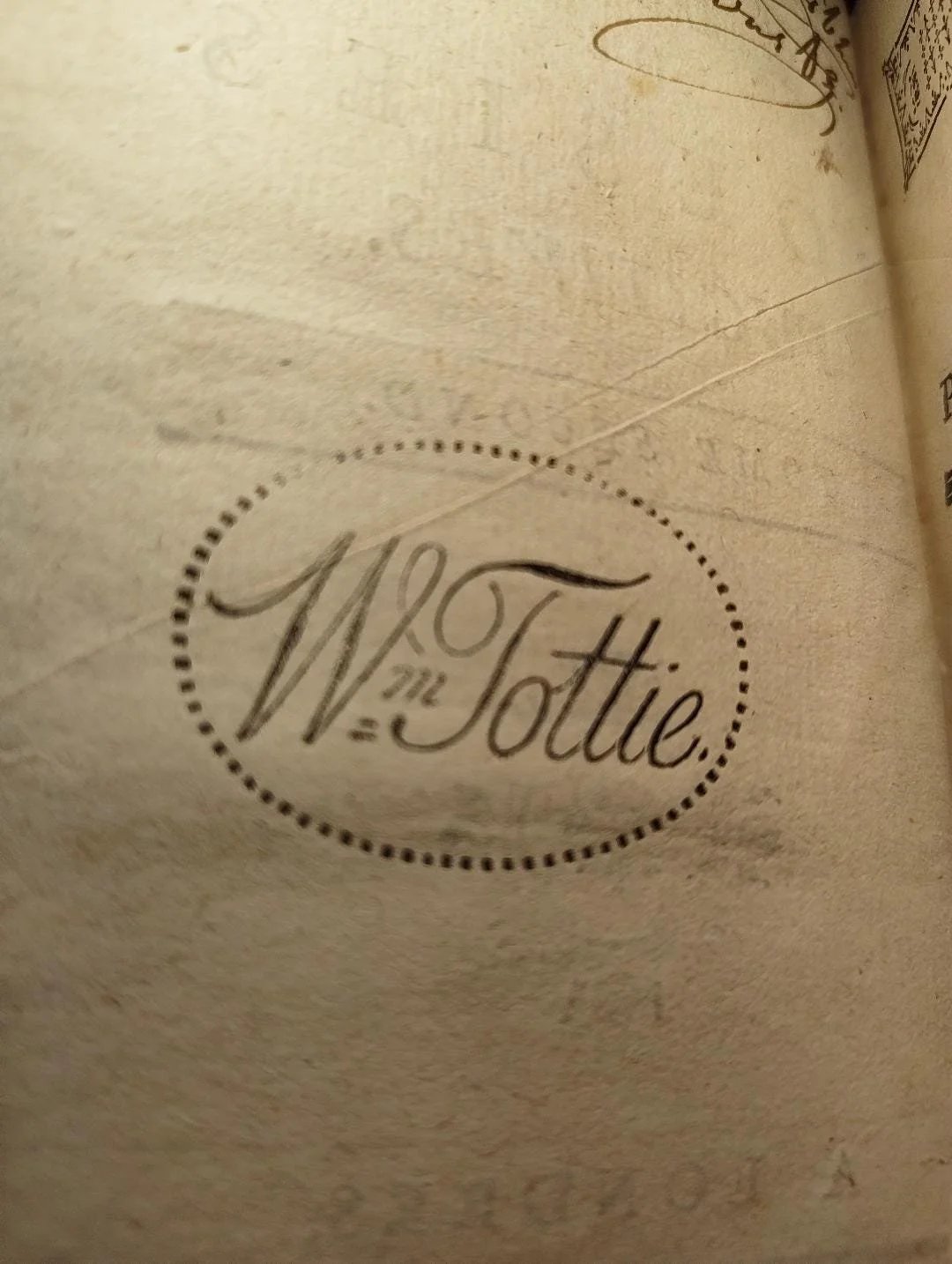 Image 7 of 10
Image 7 of 10

 Image 8 of 10
Image 8 of 10

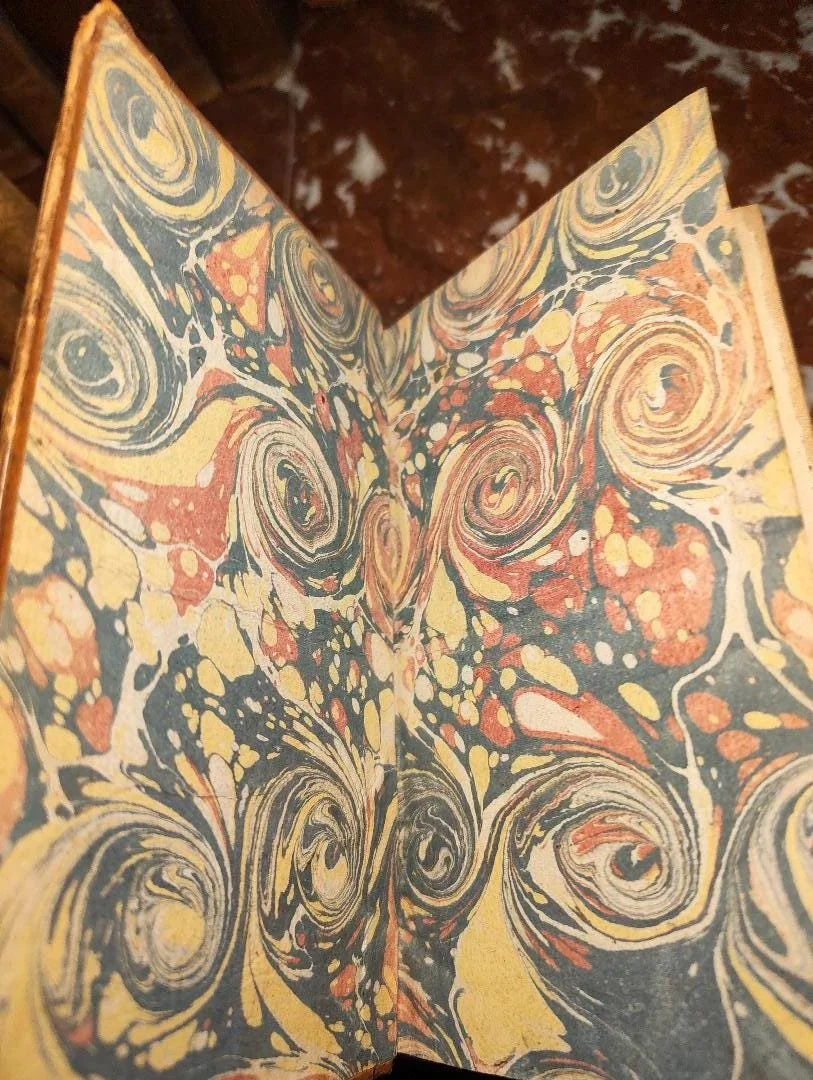 Image 9 of 10
Image 9 of 10

 Image 10 of 10
Image 10 of 10











Élite de Poésies Fugitives. Paris, 1769. Five Volumes in Contemporary Full Calf
A refined eighteenth century poetry collection with distinguished Swedish provenance from the Tottie family
This complete five volume set of Élite de Poésies Fugitives offers a graceful window into the poetic tastes of late eighteenth century France. Published in 1769 and preserved in contemporary full calf with richly gilt spines, red title labels, and marbled endpapers, the set reflects the careful craftsmanship and aesthetic sensibilities that characterised deluxe French bindings of the period. Works of this kind gathered light verse, occasional poetry, and refined literary miniatures intended for the cultured reader who valued elegance of expression and the pleasures of polished style.
The provenance of the set is particularly noteworthy. Each volume bears the stamp of William Tottie, a member of the prominent Swedish Tottie family, whose mercantile success and cultural patronage left an enduring mark on Stockholm’s eighteenth and nineteenth century intellectual landscape. The Tottie libraries, maintained both in Stockholm and at Ekolsund, were known for their breadth and cosmopolitan character. They represent some of the finest private collections of the period in Sweden.
A contemporary inscription from Claus Schmidt adds further historical depth, including a note recording his purchase of the set from the Tottie library. This combination of noble and mercantile provenance illuminates the circulation of French literary culture within Scandinavian elite circles. It also situates the set within a compelling chain of ownership that connects Parisian bookmaking with Swedish collecting traditions.
One volume preserves a pressed botanical specimen between its pages, a small yet evocative relic of a past reader’s engagement with the book. Such traces offer rare insight into the intimate history of how volumes were handled, read, and cherished.
The bindings display the expected wear of more than two and a half centuries, with softened edges and gentle rubbing along the spines, yet remain sound and visually appealing. The interiors are clean with light foxing and the natural toning characteristic of eighteenth century paper.
As an artefact the set stands at the intersection of French literary production, Swedish collecting history, and the material culture of reading. Few examples combine decorative eighteenth century bindings with such clear and distinguished provenance.
A refined and meaningful acquisition for collectors of French poetry, Scandinavian book history, or eighteenth century decorative sets.
A refined eighteenth century poetry collection with distinguished Swedish provenance from the Tottie family
This complete five volume set of Élite de Poésies Fugitives offers a graceful window into the poetic tastes of late eighteenth century France. Published in 1769 and preserved in contemporary full calf with richly gilt spines, red title labels, and marbled endpapers, the set reflects the careful craftsmanship and aesthetic sensibilities that characterised deluxe French bindings of the period. Works of this kind gathered light verse, occasional poetry, and refined literary miniatures intended for the cultured reader who valued elegance of expression and the pleasures of polished style.
The provenance of the set is particularly noteworthy. Each volume bears the stamp of William Tottie, a member of the prominent Swedish Tottie family, whose mercantile success and cultural patronage left an enduring mark on Stockholm’s eighteenth and nineteenth century intellectual landscape. The Tottie libraries, maintained both in Stockholm and at Ekolsund, were known for their breadth and cosmopolitan character. They represent some of the finest private collections of the period in Sweden.
A contemporary inscription from Claus Schmidt adds further historical depth, including a note recording his purchase of the set from the Tottie library. This combination of noble and mercantile provenance illuminates the circulation of French literary culture within Scandinavian elite circles. It also situates the set within a compelling chain of ownership that connects Parisian bookmaking with Swedish collecting traditions.
One volume preserves a pressed botanical specimen between its pages, a small yet evocative relic of a past reader’s engagement with the book. Such traces offer rare insight into the intimate history of how volumes were handled, read, and cherished.
The bindings display the expected wear of more than two and a half centuries, with softened edges and gentle rubbing along the spines, yet remain sound and visually appealing. The interiors are clean with light foxing and the natural toning characteristic of eighteenth century paper.
As an artefact the set stands at the intersection of French literary production, Swedish collecting history, and the material culture of reading. Few examples combine decorative eighteenth century bindings with such clear and distinguished provenance.
A refined and meaningful acquisition for collectors of French poetry, Scandinavian book history, or eighteenth century decorative sets.

